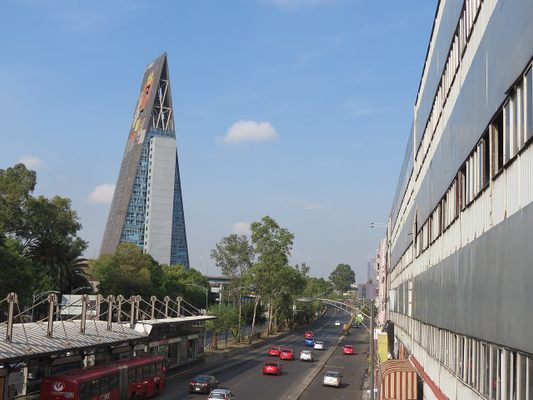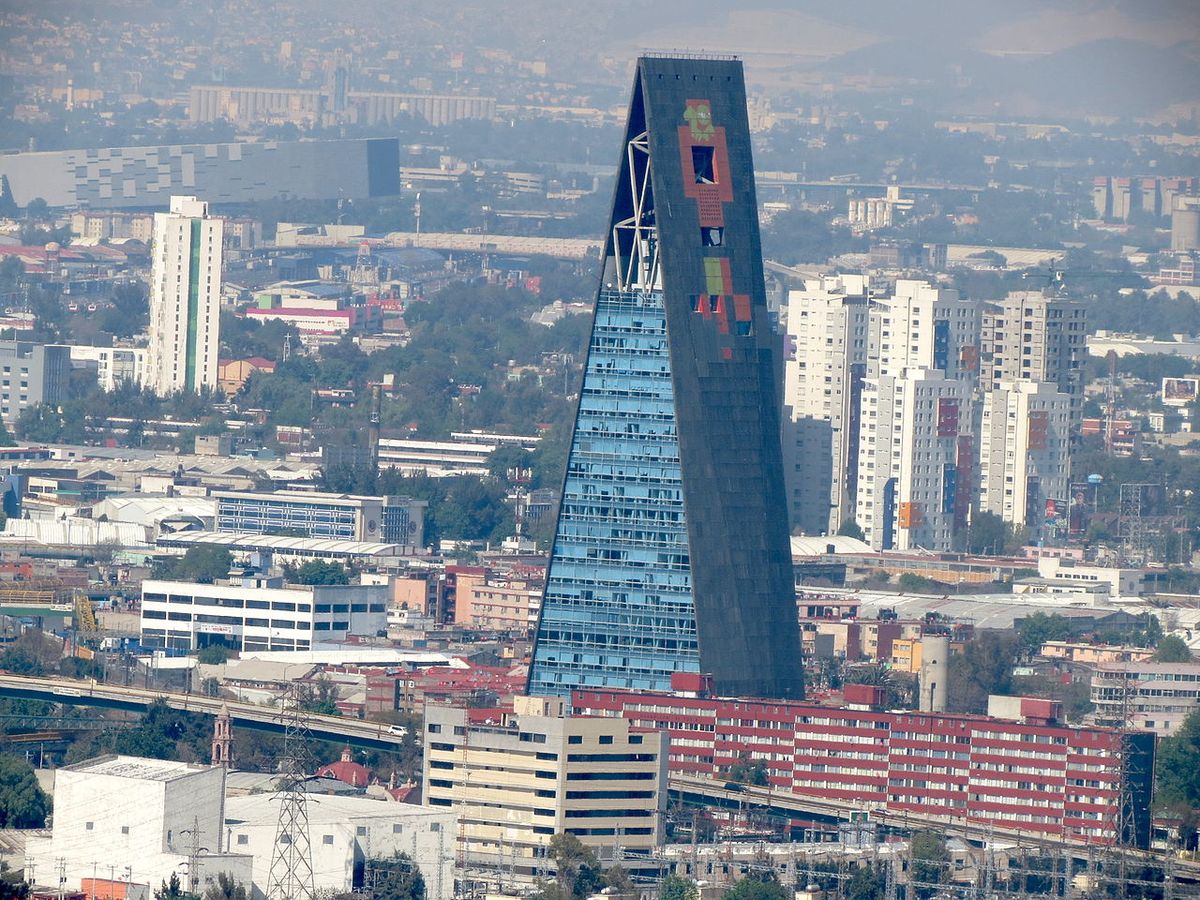About
Carillons are peculiar musical instruments that basically consist of bells that are played with the use of a keyboard. The instrument had its peak popularity in the Low Countries (Netherlands and Flanders, the Dutch-speaking part of Belgium), in the Middle Ages. Therefore, it could be expected that one of the world's superlative carillons would have been a gift from Belgium to its destination country. Less expected, however, is what this destination country is. The world's tallest carillon is located at the top of the Torre Insignia skyscraper in Mexico City.
Gifted by the Belgian government to Mexico in the early 1960s, the bells that form the carillon were cast by the Verdin Company, and arrived via boat in 1963. Its home would be the triangular prism-shaped tower, one of the most innovative and tallest in the city at the time of its construction and which had been inaugurated a year before.
The tower was designed by Mario Pani Darqui, one of the country's most notable architects. Pani's signature works include public housing units (known locally as unidades habitacionales) such as the Presidente Alemán, Benito Juárez, and Nonoalco Tlatelolco. His style was defined by the ideas of other modernists such as Le Corbusier, which can be seen in the building's peculiar shape and massive tiled murals, which were designed by the Guatemala-born artist Carlos Mérida.
With its main tenant being the government banking organization BANOBRAS, the tower would also be known as Torre Banobras. This organization employed the instrument's carillonists. Yolanda Fernández de Córdoba was the main one, starting in the 1980s. Early in the morning of September 19, 1985, an earthquake struck the country's Pacific coast, sending shockwaves through central cities such as the capital. The Nonoalco Tlatelolco and Benito Juárez units would be badly damaged, with some buildings collapsing and causing many casualties.
Though Mario Pani had died two years earlier, the damage to buildings he had designed affected his legacy. The Torre Insignia would be vacated for many years over fears of its structural integrity after the earthquake. It is unclear if the carillon's largest bell, which weighs over five metric tons, might have actually prevented worse damage by acting as a tuned mass damper. Because of this, Yolanda Fernández was not able to play the carillon, although she would occasionally access the bells and system to provide maintenance. Even as the decades went by and the tower remained abandoned, she played the carillon on special occasions, including concerts in 2002 and, perhaps the last one, in 2014.
There are some reports that Fernández passed away in 2018, although these are unconfirmed. However, it is believed she is/was Mexico's only living carillonist, considering this and the abandonment of the instrument, it is unclear if it will ever be played again. Torre Insignia's future might be a bit brighter, however, oddly enough thanks to the COVID-19 pandemic. After the virus struck Mexico City with particular intensity, its Health Secretariat needed larger offices. Since October 2020, the building is home to the Secretaría de Salud CDMX. It remains to be seen if the forgotten instrument will be restored.
Related Tags
Yucatan: Astronomy, Pyramids & Mayan Legends
Mayan legends, ancient craters, lost cities, and stunning constellations.
Book NowPublished
March 2, 2022
Sources
- http://www.essentialvermeer.com/music/carillon/carillon_a.html
- http://vivirtlatelolco.blogspot.com/2012/03/el-carrillon-de-tlatelolco.html
- https://www.youtube.com/watch?v=Bod3pUsaAOQ
- https://elpais.com/internacional/2018/03/29/mexico/1522318696_100415.html
- https://www.jornada.com.mx/2000/02/16/cul4.html
- https://heraldodemexico.com.mx/nacional/2020/10/26/se-muda-salud-cdmx-torre-insignia-de-tlatelolco-218914.html































